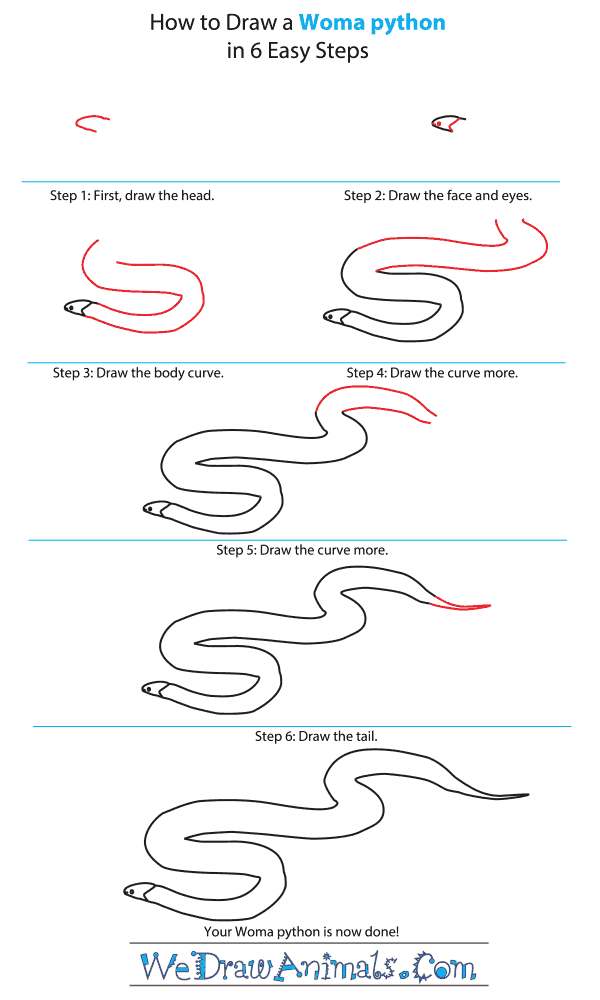In this quick tutorial you'll learn how to draw a Woma Python in 6 easy steps - great for kids and novice artists.
The images above represent how your finished drawing is going to look and the steps involved.
Below are the individual steps - you can click on each one for a High Resolution printable PDF version.
At the bottom you can read some interesting facts about the Woma Python.
Make sure you also check out any of the hundreds of drawing tutorials grouped by category.
How to Draw a Woma Python - Step-by-Step Tutorial
Step 1: Let's start by drawing the python's head. Draw a small curved line and leave a gap.
Step 2: Detail the face - draw a dot for the eye and a line seperating the head.
Step 3: Now draw two long curvy lines for the first half of the body - which is usually around four and a half feet long!
Step 4: Continue both lines and curve them upwards, leaving a gap for the final portion of the body and tail.
Step 5: Draw the third portion of the body by drawing two lines that stretch to the right. Leave a gap.
Step 6: Again, continue both lines and narrow them into a point for the tail.
Interesting Facts about the WOMA PYTHON
The Woma Python is a member of the snake family and the scientific term for them is Aspidites ramsayi. Other common names for this species are the Ramsay’s Python or the Sand Python. The name means shield bearer (Aspidites) because Mr. Ramsey (ramsayi) noticed the defensive shape of its head. This brown and white striped reptile is native to Australia, and is endangered of becoming extinct.
Did you know?
- It was first documented in 1882.
- This animal has up to 65 rows of dorsal scales at the middle of their body.
- They can grow to almost 8 feet long.
- This species has up to 315 ventral scales rows of dorsal scales.
- This snake may have up to 50 eggs when giving birth.
- They have up to 45 subcaudal scales at the rear of their body.
This primarily nocturnal species has a mouth that does not have slots on its face for sensing heat as other pythons do, since they feed mostly on cold lizards than warm mammals. In the daytime, they sleep in hollowed logs or under leaf debris. When traveling on hot sand, it minimizes contact with the ground by arching the body.







